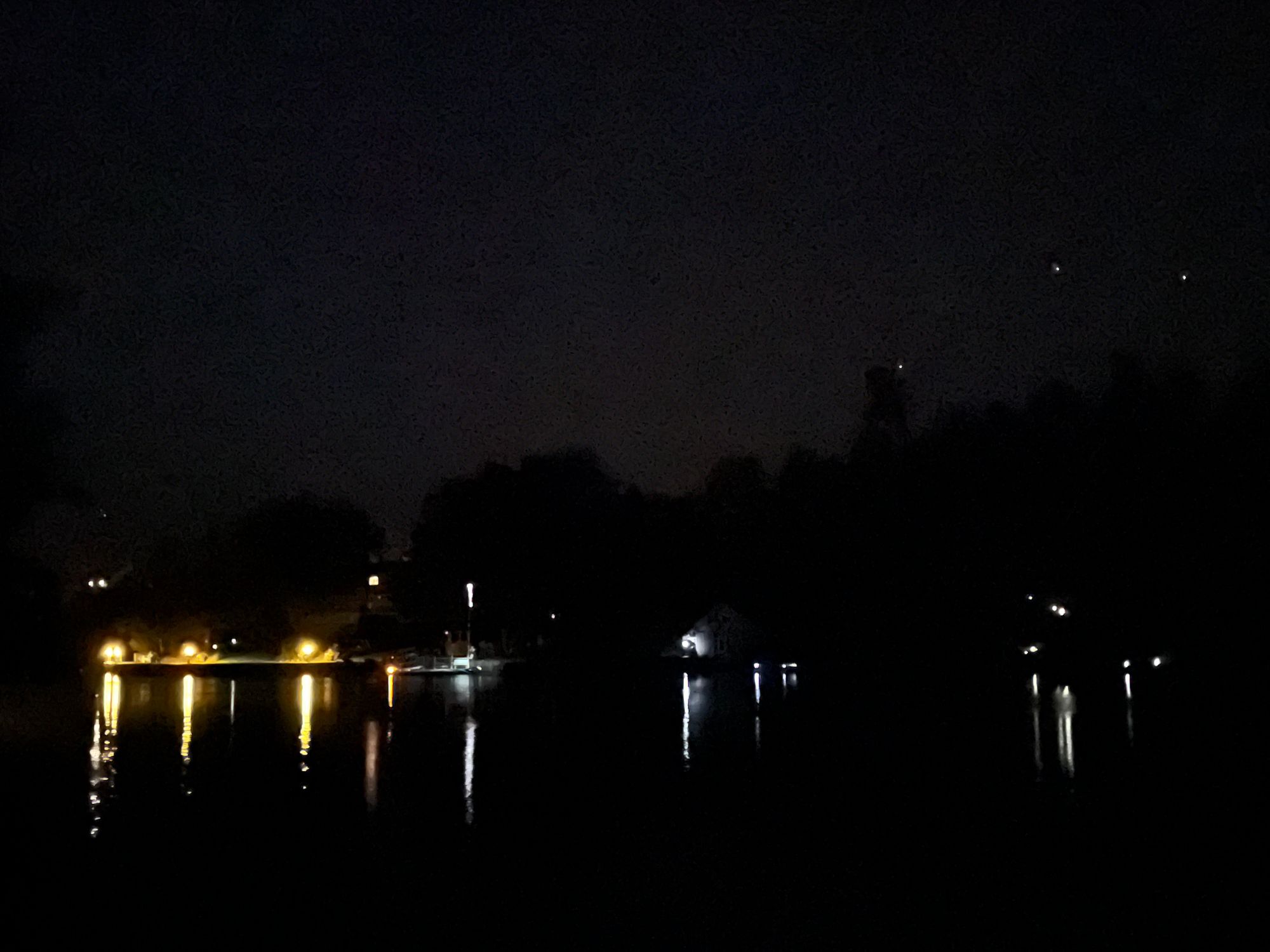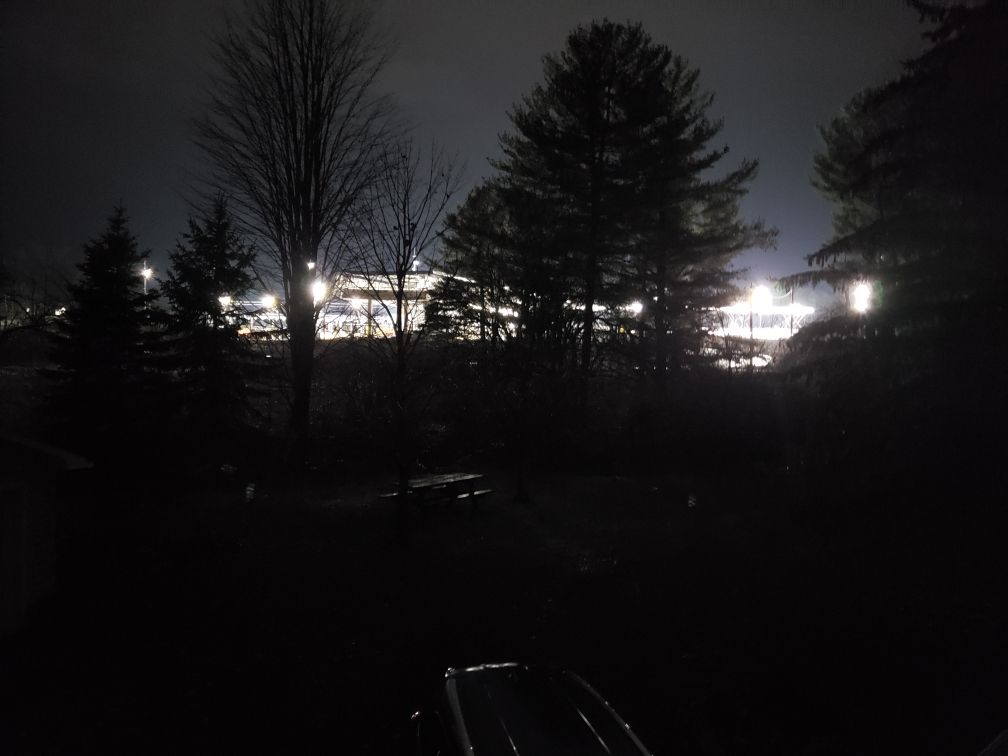As a young child I would wait until after dinner, then my dad would say, “Time to find the night!” and off we would go down the hill, into our boat, and out onto the River. One of our usual paths in August was to thread through the Narrows into Eel Bay. Once there, he would turn off the engine and we would float. We would see day move into night, as we watched the sun set. A favorite game was counting the loons. Some nights there were too many to count. As they dove down under the water I would try to guess where they would pop back up! Riding home after dark, my father would show me the entrance to the Narrows by the two tall evergreen trees. He told me that lights on the shoreline hurt a captain’s ability to navigate — think what it must do to night creatures.

The darkness wasn’t truly dark. There were an endless number of stars, the path of the Milky Way, and at this time of year, shooting stars to count. I really didn’t think anything of it then, as my parents spoke about “Night Light” pollution and how very lucky we were to be able to be in a place like Eel Bay. I do now.
Night Light Pollution is real. Learning about it now, I realize how damaging it can be but also empowering to know we can make a positive change right in our own yards, businesses, and shorelines. It does not have to be complicated.
Night Light Pollution is defined as excessive artificial lighting. There are a few types of light pollution:
● Glare: This can blind a person momentarily as their eyes adjust and can be dangerous to a driver on land or on the water.
● Skyglow: This is a glow throughout the night sky taking away the night.
● Clutter: This is randomly placed lighting – too many lights.
● Trespass: This is when lighting from one property intrudes on a neighbor shining on their land or into their windows.
When you consider light pollution, think not only of the night sky and how it disrupts your enjoyment of star gazing. Think also of the creatures who depend on the night above you, below you, and all along the River’s edge.
Night Light Pollution disrupts ecosystems, and the physiology of plants and animals. It confuses migratory animals, including birds, frogs, toads, hummingbirds, and fireflies. Fish are harmed as the artificial light interferes with their biological rhythm. It alters predator-prey patterns as well.

Night Light Pollution directly impacts people by disrupting our natural circadian rhythms that depends on day and night to produce the proper amount of melatonin. This can lead to various sleep problems and an increase in stress. Lighting at night is often an extremely wasteful use of energy. Lighting accounts for ¼ of our electrical use worldwide.
The good news is that each one of us can make a positive change easily. If you need exterior lighting, install on-off switches in convenient locations. Shield your lights so they face down, not up in the sky or out towards a neighbor. Use bulbs of the appropriate spectral power – on the River, try soft yellow lighting. Turn off the lights on the shore except for what you need to navigate safely. This keeps our shoreline habitats in their natural beauty! Learn more at International Dark Sky Association (IDA). IDA provides information to city planners and individual homeowners alike.
A few easy steps can assure a healthy night for you, your neighbors, the plants, and the animals, with whom we share this beautiful River, and years of enjoyment counting the shooting stars!

Resources: International Dark Sky Association, National Audubon Society, Friends of the Lake District, England. Nasa Night Sky Network, Leibniz Institute of Freshwater & Inland Fisheries (IGB)
By Heather White
Heather White spent as much time on the River as possible growing up, and the tradition continues with her children who are 5th generation on TI Park. She earned her undergraduate degree from Buffalo State Collect and a Master’s in Education from Potsdam State College. Heather taught for over 30 years. A long-time Save The River volunteer, she has served on the Education Committee since 2006, and is passionate about the In the Schools Program. Heather has also served on several boards, including the Minna Anthony Common Nature Center, Stage Notes (a youth theater company), First Presbyterian Outreach Council and the founding member and chair of the Malawi Early Literacy Team (MELT).
This group provides culturally responsible literacy materials, teacher training, and a Mobile library to 20 schools in Northern Malawi. She also works with Women of Grace Widow’s Fund, an organization she helped found committed to helping women in Malawi, Africa, establish self-sufficiency.
Posted in: Volume 17, Issue 7, July 2022, Nature
Please click here if you are unable to post your comment.
